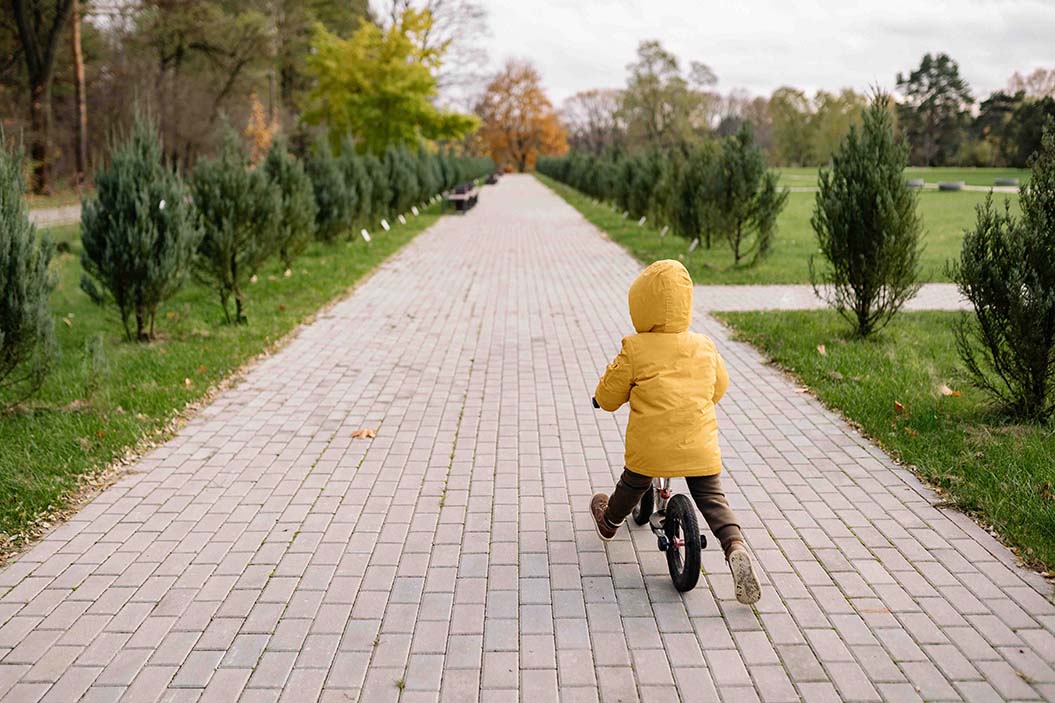What Is A Balance Bike? Your Complete Guide to all things Balance Bike.
Think back to when you learnt to ride a bike. An adult pushing and instructing frantically, while you try to balance, steer, pedal and NOT CRASH all at once!!! What a STEEP learning curve…
But your child’s first memories of learning to ride are going to be very different. Instead of getting that first bike at 5 or 6 years old, they will get a bike for their first birthday! That’s how much balance bikes have changed the game! But, Wait… What is a Balance Bike?
What Are Balance Bikes Used For?
Balance bikes are ingeniously designed to help young riders master the art of balance before tackling those pedal-powered adventures. With no training wheels to hold them back, children can develop their coordination and build confidence at their own pace.
These bikes are the perfect stepping stone, preparing them for the thrill and freedom of their first BMX. It’s like their very own superhero origin story, where they become the masters of balance!
I have been so impressed with these little pedal-less wonders that my family has far more bikes than family members. This has led to some extremely fun times and a couple of tears too, but it’s all about learning.
I wanted to summarise all of the information surrounding balance bikes, asses the question ‘what are balance bikes used for?’ and share my experiences. So, I have put down some thoughts and information to help you discover their benefits and secrets so you can choose the perfect balance bike for your lil’ ripper.
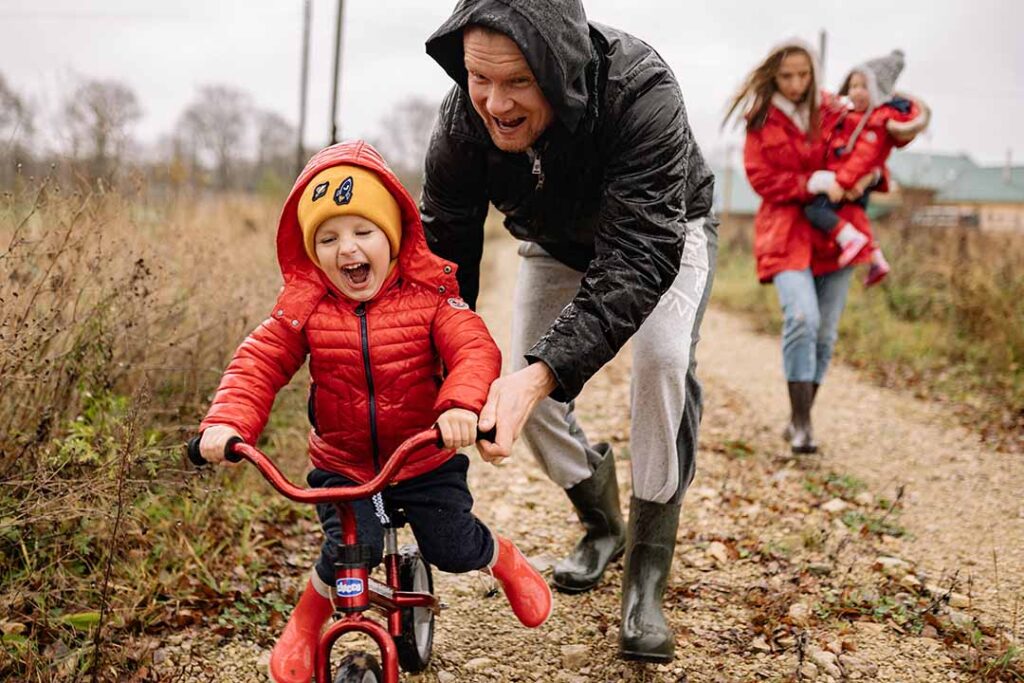
Embrace the Great Outdoors
In today’s digital age, it’s more important than ever to encourage outdoor activities for kids. This was one of the main motivators for my kids book series ‘The Adventures of Bazza Koala’, encouraging young kids to get outside amongst nature while nurturing a love of reading.
Balance bikes provide an exceptional opportunity for children to immerse themselves in nature, breathe in the fresh air, and explore the wonders of their surroundings, while developing spatial awareness and perception.
Outdoor play not only promotes physical health but also stimulates their creativity, imagination, and cognitive development. But that’s a blog in itself! The take away here is to get those little adventurers off the couch, onto the saddle, and making good old-fashioned childhood memories.
Choosing The Right Child’s Balance Bike
Selecting the right balance bike for your child is important. Factors such as the bike’s size, weight, and adjustability should be considered. By choosing a bike that perfectly matches your child’s age and size, you’re setting them up for a seamless and enjoyable learning journey.
By choosing correctly you will eliminate unnecessary obstacles and allow your child’s confidence to soar as they conquer the art of balance and experience the sheer delight of riding, but get it wrong and you may see them struggle and want to avoid the bike altogether.

Age and Skill Considerations
Suitable Age Range for Balance Bikes
Majority of the balance bikes are designed for kids as young as 18 months to 3 years as a guide. This is the perfect age range to introduce them to the world of biking and develop their balance and coordination skills.
However, every child is unique, so it’s important to assess their readiness and physical abilities before getting a balance bike. Keep in mind that some children may be ready to start earlier, while others might need a bit more time.
Learning Curve and Individual Progress
Balance bikes offer a gentle learning curve, allowing children to gradually master the art of balance at their own pace. Keep in mind that every child progresses differently, so choose a balance bike that offers adjustable features to accommodate their growth and skill development, more on that in a sec.
I found that both of my children were immediately intrigued by this new, crazy toy but found it challenging. This made them a little reluctant. So I regularly reintroduced them to their balance bike for short periods of time, stopping as soon as they had had enough. I found that the amount of time they wanted to spend on the bike increased and eventually, as they got comfortable, they didn’t want to get off.
Building Confidence and Making Learning Enjoyable
When exploring what is a balance bike, you need to know they’re not just about acquiring biking skills. They also play a vital role in building confidence and making learning fun for kids. A comfortable seat and ergonomic design will keep them happily rolling for hours.
Weight and Manoeuvrability
Consider the weight and manoeuvrability of the balance bike, as it directly impacts your child’s ability to control and handle it. Lightweight bikes are easier for children to manoeuvre, allowing them to navigate turns, obstacles, and different terrains with ease.
Look for bikes made from lightweight materials like aluminium or high-quality plastic, ensuring that your child can effortlessly handle their new ride.
Adjustable Seat for Longevity and Sharing
Obviously a child’s height is a significant factor in finding the right balance bike. Look for bikes with adjustable seat heights, allowing you to customise the fit as your child grows.
The correct seat height ensures proper leg extension and a comfortable riding position, promoting better balance and control. As a general guideline, your child should be able to sit on the bike with their feet flat on the ground, allowing for easy pushing and stopping.
This also means more years of enjoyment from the same bike, saving you money in the long run. What’s more, if you have multiple children or plan to pass the bike down to a sibling or friend, the adjustable seat makes sharing a breeze.
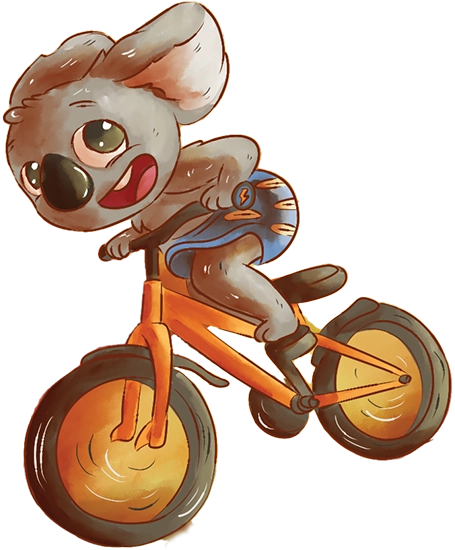
What is a Balance Bike – Types of Balance Bikes
When choosing the type of balance bike that’s right for your child, consider their preferences, your budget, and the intended use. Each material offers its own unique benefits, so it’s good to find the perfect balance between durability, weight, and aesthetic appeal.
Wooden Balance Bikes
If you’re drawn to this style, first check the weight of the bike versus other aluminum bikes. There are good wooden balance bikes out there but they can also be a bit clunky of not designed well. a benefit of wooden bikes is they are less likely to rust. Wooden balance bikes are perfect for eco-conscious parents who appreciate the natural charm of wood and want a bike that can handle the rough and tumble of outdoor adventures.
Aluminium Balance Bikes
For those with sporty little tykes who dream of becoming the next cycling champion, aluminum balance bikes are a fantastic option. The lightweight aluminum frame makes these bikes agile and easy to handle, giving young riders the freedom to zip around with confidence.
My little fella was struggling with his weighty, steel balance bike. While it was a great brand, he was a small kid for his age. The day we got him an aluminium we saw his confidence and progression take off!
Aluminum bikes are ideal for more lightweight and petite riders. So, if you’re worried your child might struggle with a heavy frame, an aluminum balance bike will help them reach new levels of excitement.
Steel Balance Bikes
When it comes to durability, steel balance bikes are the tough guys on the block. Built to withstand the demands of adventurous riders, these bikes are virtually indestructible. The sturdy steel construction ensures they can handle bumps, jumps, and all sorts of rough play.
It also provides stability when riding down hills FAST!
Steel may be a bit heavier compared to other options, but the added weight provides stability and momentum, making them a reliable choice for little daredevils who are always pushing their limits.
Plastic Balance Bikes
If you’re looking for a budget-friendly option that doesn’t compromise on fun, plastic balance bikes are here to save the day. These lightweight and affordable bikes are perfect for introducing your child to the joy of riding.
Available in a range of vibrant colours, plastic balance bikes capture the imagination and make learning to balance an exciting adventure. While they may not have the same level of durability as other materials, they offer a wallet-friendly entry point into the world of balance biking. Plus, like aluminium, their light weight makes them easy for young riders to handle and manoeuvre.
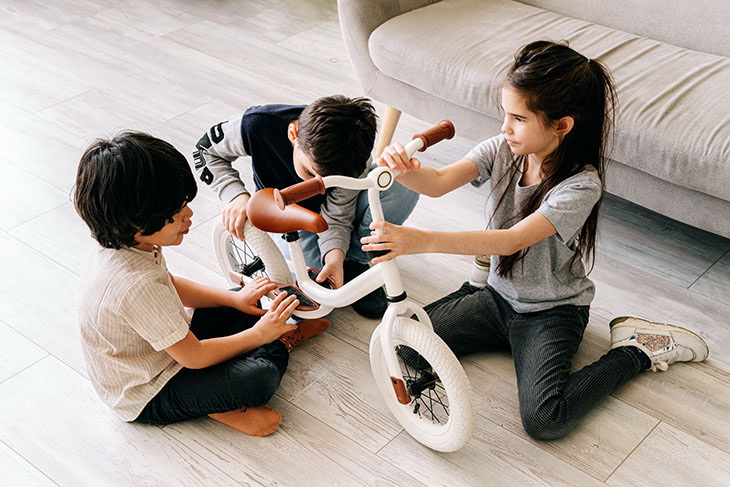
Key Features to Consider
When it comes to choosing a kids’ balance bike, there are several key features that you should take into consideration. These features can greatly impact your child’s riding experience, comfort, and safety.
Air Tires vs. Foam Tires
One of the first decisions you’ll need to make is whether to go for air tires or foam tires. Air tires provide excellent cushioning, making the ride smoother and more comfortable for your little one.
They also offer better traction, allowing them to navigate different terrains with ease.
On the other hand, foam tires are puncture-proof and require minimal maintenance. They are a great option if you’re looking for convenience.
However, water plays havoc on foam tires. They become super slippery and as they’re so rigid they don’t grip the ground and poor traction leads to accidents. So consider the type of surfaces your child will be riding on and choose the tire type that suits this.
Comfortable and Protective Grips
Grips may seem like a small detail, but all of these small things add up! Look for balance bikes that have ergonomic grips that are soft, non-slip, and easy to hold. These grips provide a comfortable grip for your child’s hands, preventing discomfort and fatigue during longer rides.
Most importantly, consider models that have protective ends on the grips. Over time the handle bar tube cuts through the soft grips and dangerous piece will stick out. A plastic cap at the end of the handle bars will stop the grips from wearing through and put a protective barrier one the end of the hangers.
Weight of the Balance Bike
As mentioned in the previous section, the weight of the balance bike is an important factor to consider, especially when it comes to your child’s ability to handle and maneuver the bike. A lightweight balance bike is easier for young riders to control, steer and push up steep inclines, giving them more confidence in their abilities.
A general rule of thumb is that the pushy should not exceed 33% of your child’s weight (this is number has been agonisingly researched at the Bazza balance bike barn for burning rubber). Opt for a bike that strikes the right balance between being sturdy and lightweight.
Keep in mind that you may need to lift or carry the bike at times when you stayed at the bike track or park for too long. Balance bike in one hand, melting down child in the other… So choosing a manageable weight is beneficial for both you and your child.
Things to Watch Out for When selecting a Balance Bike
Practicality and function should be more important than style. Try to avoid balance bikes with small, plastic wheels and oversized heavy wooden frames. They might look cool, but by prioritising fashion they can compromise functionality and can set your child up for frustration. I have seen a few wipe outs because of designed wheels. Quality tyres are lightweight and less slippery, setting your child up for success.
Most bikes arrive in a box and need to be assembled before the maiden voyage. Ensure all nuts and bolts, screws and clasps are firmly tightened. Also, periodically check the stuff holding the bike together is still doing it’s job. Some of this hardware isn’t the highest quality and will vibrate loose over time. The last thing you want is a tyre coming loose at a critical moment!
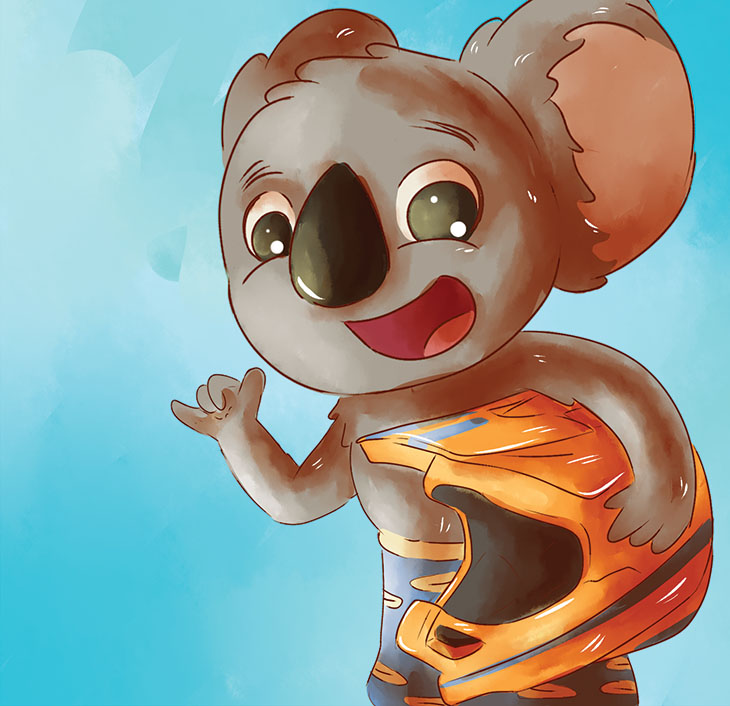
Teach your little on bike safety with Bazza Has a Stack.
A helmet to protect them from themselves
Speaking of having a stack, a helmet is as important as the bike itself. I know it can be an after thought, as the little one has only just learnt to ride. But, before you know it they will be taking on steep hills and rough terrain. You can read my first hand account one such incident here.
We found a light, full faced helmet that has a detachable chin guard to switch between full-faced and half-faced, depending on where they’re riding. Our boys both got one at 18 months old, the size is adjustable so it has lasted 3 years with no sign out outgrowing it any time soon. They are a very wise investment that has saved our boys faces countless times. If you’re in the U.S. check it out here.
Wrap it up
To wrap up, balance bikes are epic little creations that will keep your child occupied for hours. They have made learning to ride a bike vastly easier and help kids develop their cognitive skills early. When considering the right balance bike for you’re little one, think about your child’s size, the bike’s construction and weight. Consider adjustable seats and handle bars to get longevity out of your purchase. Watch out for bikes that prioritise style over function and always ride with a helmet.
I hope this has answered the question ‘what is a balance bike’ and provided some insight and helped inform if you’re looking to buy one. Please drop a comment below letting me know your family’s experience with balance bikes. Cheers mate, Josh

